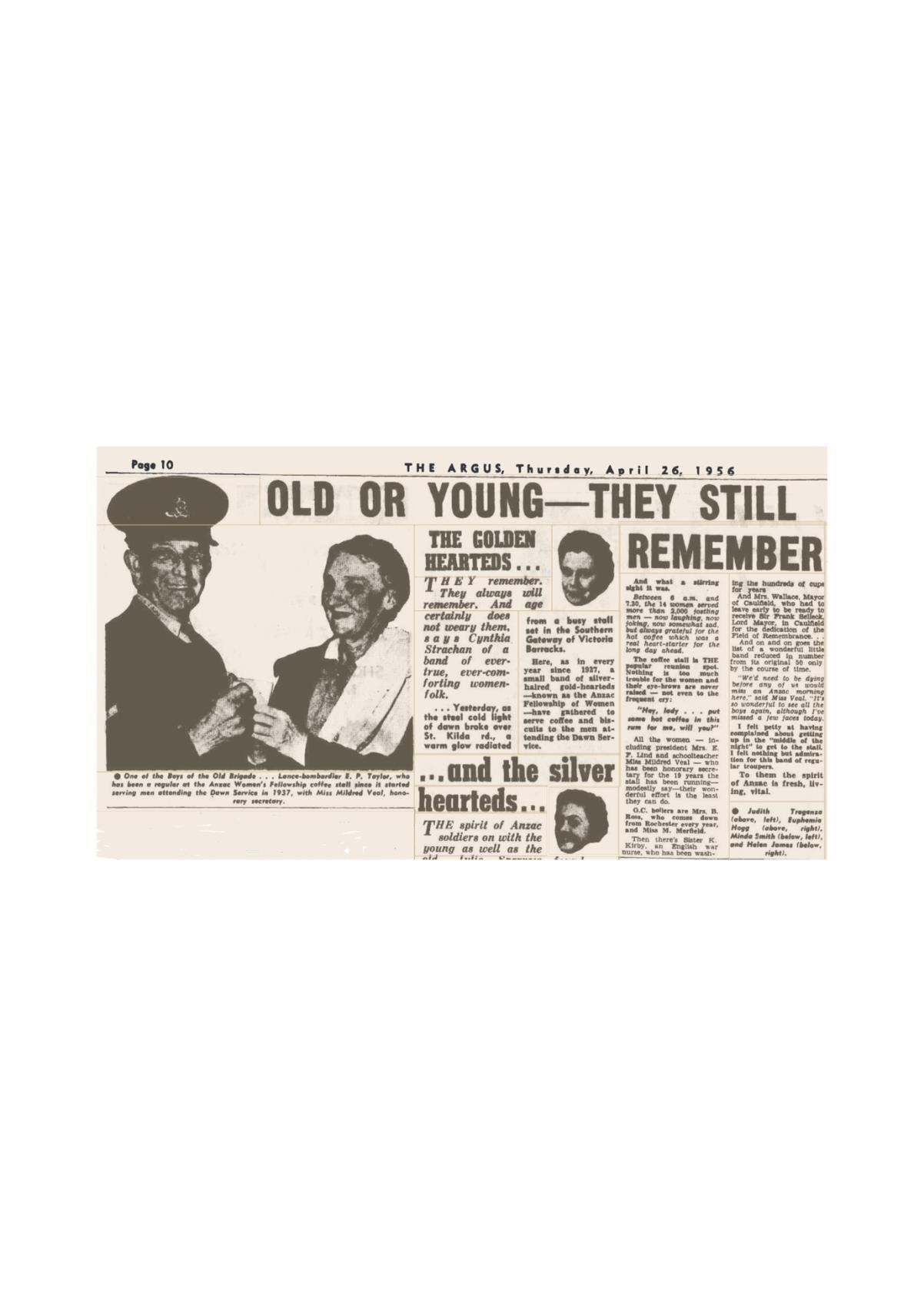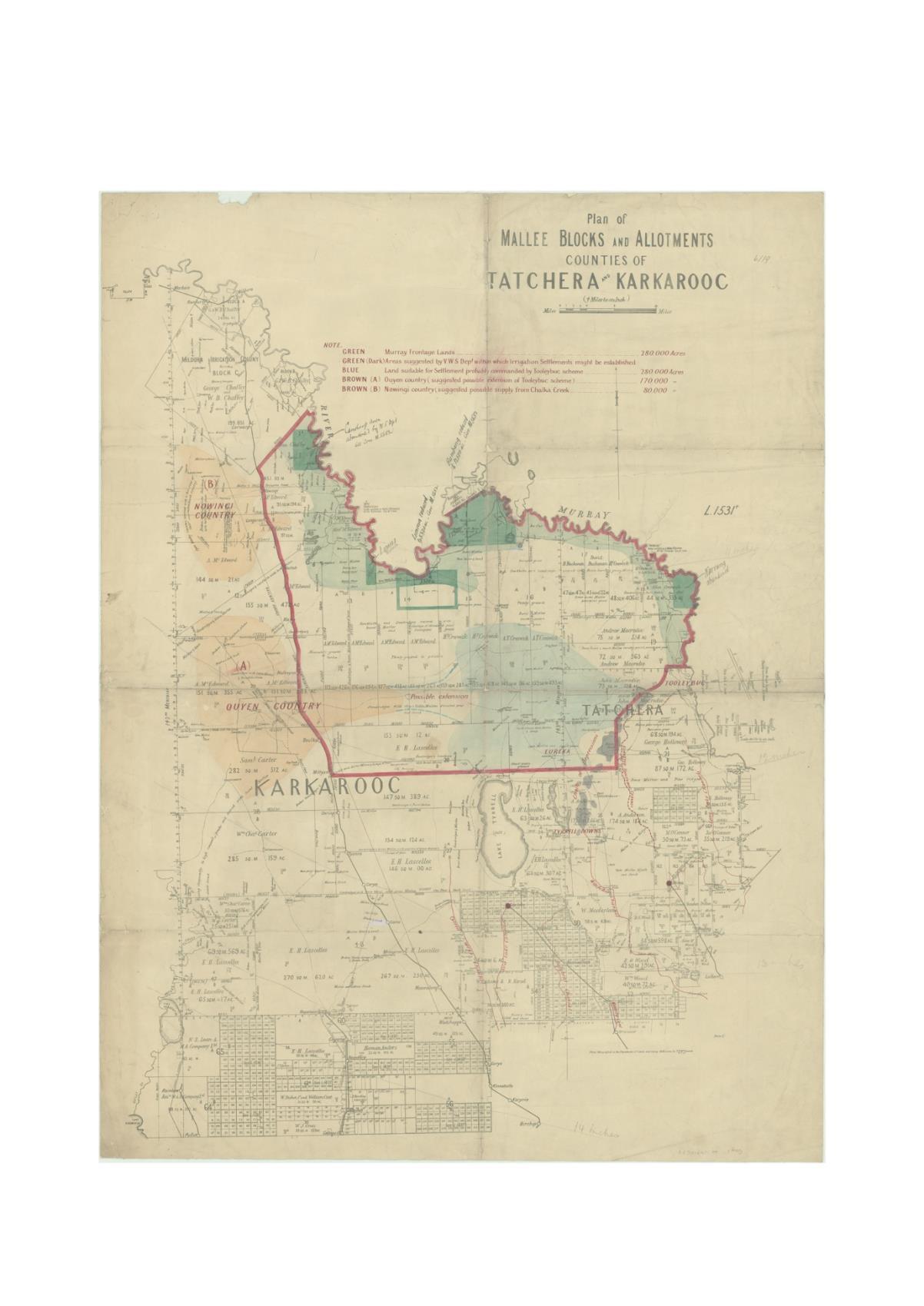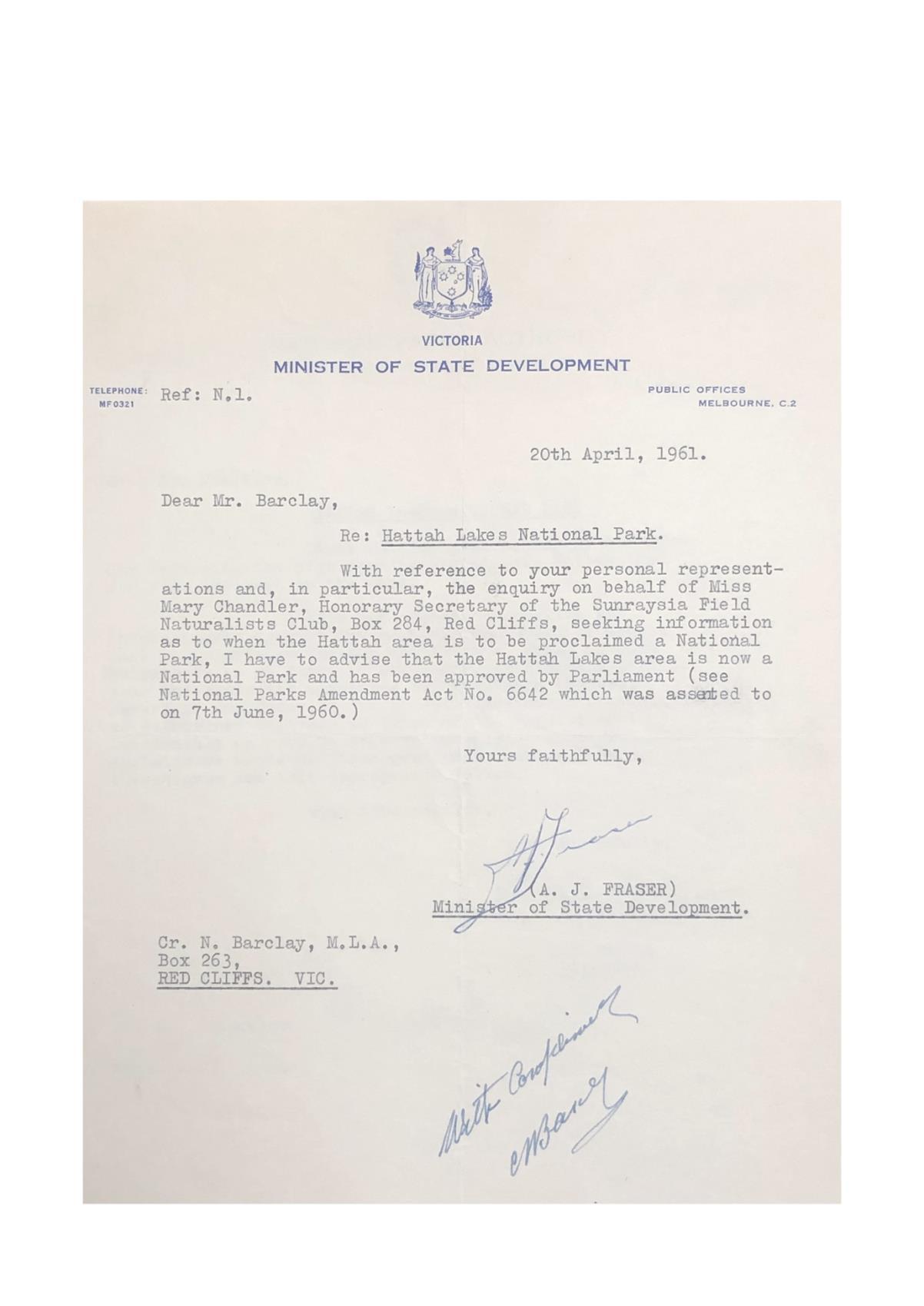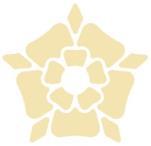
Author and artist: Christine Johnson
Editor: Michael Shmith
published by Christine Johnson
2023
ISBN: 978-0-9941795-1-17
All rights reserved
christinejohnsonartist.com
+61 409 454 054


Author and artist: Christine Johnson
Editor: Michael Shmith
published by Christine Johnson
2023
ISBN: 978-0-9941795-1-17
All rights reserved
christinejohnsonartist.com
+61 409 454 054
I’ve been irresistibly drawn to the life of Mallee botanist Eileen Ramsay (née Couve) ever since Heather Lee showed me Eileen’s botanical collection at the Mildura Arts Centre in 2015. From this moment, Eileen and her cohort of field naturalists have been an ongoing source of inspiration to me.
In 2019, the Faculty of Pharmacy at Monash University commissioned the ‘Five Soldiers’ project. One of those soldiers, Eileen’s brother Alan ‘Dutchy’ Couve, was a student of Pharmacy before he enlisted. Alan and his brother, Tom, both died at Gallipoli in 1915.
After the war, their sister, Eileen, and her heartbroken parents came to the Mallee to make a new life. Joson Couve opened the first pharmacy in Red Cliffs, and it wasn’t long before Eileen became an active member of her new community The grief of loss, common to so many families after World War I, although it could never be forgotten, in time gave way to a new life and new friendships for Eileen The establishment of the Sunraysia Field Naturalists Club (the ‘Field Nats’) and Eileen’s immersion in the mysterious and beguiling beauty of the Mallee landscape inspired her to create a comprehensive collection of the native flora of the area. Her significant collection of botanical specimens blossomed in tandem with her poetic nature writing.
Over the last decade, I have collected various fragments and details of the lives of the Couve family –poignant evidence of a story that contains both loss and joy. For Eileen, the company of the ‘Field Nats’ and the botanical treasures of the Mallee provided her with an enduring source of consolation and joy.
This small selection of details is but fragmentary evidence of a life that continues to inspire and reward.
Christine Johnson 2023christinejohnsonartist.com
Christine combines an interest in historical narratives and native flora, exploring ideas through painting, drawing and printmaking, and adapts these traditional forms into public art, sound, and installation works.
Eileen Ramsay collected in the Millewa-Mallee lands. These are the traditional lands of the Latji Latji, Ngintait, Nyeri Nyeri and Wergaia peoples, whose deep knowledge and understanding of the landscape and its lifeforms long precede the work of Eileen and her colleagues. I acknowledge these peoples past and present.

2023
List of Works
1 Letter from Joson Couve to William Irvine inquiring about the fate of his sons, 30 June 1915
2 Description of Lieutenant Alan Crawford Couve
3 Old or Young – they still remember
4 Plan of Mallee Blocks and Allotments, 1904
5 List of attendees, first meeting of Sunraysia Field Naturalists Club, 18 November 1949
6 Meeting notes, Sunraysia Field Naturalist Club
7 A Sunraysia Field Naturalist Club outing at Hattah, 1958
8 Letter from the Minister of State Development, 20 April 1961
9 John Plant and Eileen Ramsay near the Murray River
10 Specimen collection sheet from the Eileen Ramsay Collection, 1952
11 Transcribed notes on Porcupine Grass from collection sheets, 21 September 1950
12 Bundles of specimens sent to the National Herbarium by Eileen Ramsay
13 A Mallee Sanctuary, a poem by Eileen Ramsay (c. 1954)
14 Outing, Sunraysia Field Naturalist Club, 1958
15 Dedication to John Plant in a book of stories and poems written by Eileen Ramsay, 1954
16 Rare photograph of Eileen Ramsay and friends

1 Letter from Joson Couve to William Irvine inquiring about the fate of his sons, 30 June 1915
Melbourne 20/6/1915 To the Honourable Mr Irvine Federal Parliament
Dear Sir,
On the 17th May, I received a message from the defence department informing me that my youngest son Lieutenant A C Couve was wounded; on the 24th, a second message, that he was killed in action. On the 30th, another message, that my son Tom Couve, who after several days fighting had been made also a lieutenant, had been killed in action. Since then, letters received by relations of members of the first contingent, confirm the news of the death of Lieutenant Tom Couve, but say absolutely nothing about my other son. A letter received by me from my son Tom Couve, by last mail confirmed the news of my son A C Couve being severely wounded and was not in a position to go back to the front again. Later on a letter received from Mr Dalton father of Lieutenant Dalton, who was wounded at the Dardanelles, confirm the news of my son Tom being killed and also of my son A C Couve being wounded. With these informations, I applied by telephone to the Defence Department and asked them to make enquiries, and to try to confirm either the two boys had been killed or one killed and one wounded. I was assured that nothing could be done and if I wanted to do so, I could cable to Stralis Cairo [telegraphic address for the Australian Infantry Forces in Egypt in World War I] for information.
Any private cable I am afraid will be useless, and I wish you to see, if anything could be done to allay our anxieties about one of our boys at the front. I am willing if the defence department has to pay anything for the cable to reimburse it. Hoping you will kindly attend to this very serious matter to us.
I remain, dear Sir, your obedient servant, Joson
Couve Chemist DandenongSource: From the collection of National Archives of Australia. NAA:B2455. Published in Five Soldiers: Untold Stories of World War I, by Christine Johnson and Michael Shmith, 2019

A letter from his sister Eileen to authorities seeking information about her brothers in 1915. The family had to wait until 1920 to receive confirmation of Alan’s death.
Description of Lieutenant ALAN CRAWFORD COUVE, 7th Platoon, B Coy, 8th Infantry Battalion, Australian Imperial Forces, also latest known details concerning him.
Heavy, powerful build, well proportioned, with high arched feet: light brown hair, tanned complexion, grey-blue eyes inclined to be round, [handwritten] heavy eyebrows, well-shaped mouth, full face; height about 5 ft. 9 ½ or 10 inches. Exceptionally muscular, with good carriage, good teeth, some gold filled.
Had tip of sword embedded at base of toes in one foot, probably the left one; had had 2 ribs broken in 1913, one of which penetrated the lung; several scars on the back of neck from boils; age 26; was 21 when the Landing took place but looked 3 years older.
Wound said to be near the top of head, the bullet going in near the top of the forehead over the right eye and coming out somewhere about the crown of the head; the wound thought to be superficial when examined by his sergt immediately it occurred.
An all-round athlete, being a fine shot, footballer, and tennis player, also a good bowler at cricket; fine untrained baritone voice, with the gift of entertaining a company or crowd. Sensitive hands; had been in training as a chemist and had good knowledge of drugs and bandaging, etc.
Nicknamed “Dutch” or “Dutchy” enlisted in Aug. 1914 from Dandenong, Victoria, Australia, where he lived with parents, elder brother called Tom, who also left with him for Gallipoli in October 1914 in the 8th Battalion, on the HMAT Benalla as Sergeant. Has sister called Eileen, sometimes called Sue. House was called ALLOWAH. Was betrothed to Millie Veal whose father was the local Vicar. Her photo enclosed. Father a chemist. Left Australia as 2nd, Lieut, was promoted 1st Lieut. In Egypt; was in Mena Camp with the 1st Australian Division. In Mena hospital for 5 weeks, owing to accidental sword thrust in foot; left for Lemnos on the “Clan McGillvray”. Was wounded early on the morning of 26th April 1915; wound examined and bound up by his Sergt, who thought it was comparatively slight and who, with a private soldier, carried him to dressing station on the Beach, expecting him back in 3 or 4 days.
A month later he was posted dead, but no one can be found who saw him die, or who knows where he was buried.
From the moment he was left unconscious at the dressing station on the Beach at Anzac Landing, Gallipoli, no authentic information can be obtained.
Source:
National Archives of Australia: B2455, Couve A C, page 9/51, Item ID 3433146

3 Old or Young – they still remember
They remember. They always will remember. And age certainly does not weary them, says Cynthia Strachan of a band of ever-true, ever-comforting women folk. Yesterday, as the steel cold light of dawn broke over St. Kilda Rd., a warm glow radiated from a busy stall set in the Southern gateway of Victoria barracks.
Here, as in every year since 1937, a small band of silver-haired golden hearteds – known as the Anzac fellowship of Women – have gathered to serve coffee and biscuits to the men attending the dawn service.
And what a stirring sight it was. Between 6 am and 7.30, the 14 women served more than 2,000 jostling men – now laughing, now joking, now somewhat sad, but always grateful for the hot coffee which was a real heart starter for the long day ahead.
The coffee stall is THE popular reunion spot. Nothing is too much trouble for the women and their eyebrows are never raised – not even to the frequent cry: “Hey, lady…put some hot coffee in this rum for me, will you?”
All the women – including president Mrs E.F. Lind and schoolteacher Miss Mildred Veal – who has been honorary secretary for the 19 years the stall has been running – modestly say their wonderful effort is the least they can do.
[Other women at the stall include] Mrs B Ross, who comes down from Rochester every year, and Miss M. Merfield. Then there’s Sister K. Kirby, an English war nurse, who has been washing the hundreds of cups for years.
And Mrs. Wallace, Mayor of Caulfield, who had to leave early to be ready for the dedication of the Field of Remembrance….
And on and on goes the list of wonderful little band reduced in number from its original 50 only by the course of time.
“We’d need to be dying before any of us would miss an Anzac morning here,” said Miss Veal. “It’s so wonderful to see all the boys again, although I’ve missed a few faces today.”
I felt petty at having complained about getting up ‘in the middle of the night’ to get to the stall. I felt nothing but admiration for this band of regular troupers. To them the spirit of Anzac is fresh, living, vital.
Caption, main picture: One of the Boys of the Old Brigade… Lance-bombardier E.P. Taylor, who has been a regular at the Anzac Women’s Fellowship coffee stall since it started serving men attending the Dawn Service in 1937, with Miss Mildred Veal, honorary secretary.
Note: Millie Veal had been engaged to Alan Couve before the war and was Eileen’s life-long friend and sole beneficiary of her estate
Source: The Argus, 26 April 1956, p. 10 (author uncredited)

4 Plan of Mallee Blocks and Allotments, 1904 Counties of Tatchera and Karkarooc (cartographic material/ photo-lithographed at the Department of Lands and Survey, Melbourne, by T.F.McGauran, 8/02/04
Why the Couve family settled in Red Cliffs.
By the mid-1920s Joson Couve was on the move from Dandenong to the Mallee, where he would open the first pharmacy in Red Cliffs. After the war, a settlement was developed in the region for returning soldiers. It is possible that Joson Couve, honoring the memories of his two lost sons, wanted in some way to help these young men who fought bravely and survived. At this time, the Mallee was thriving. With the recent completion of the North-Western (now Calder) Highway, this was a time of significant rural development; many surveys were underway on the viability of farming, the quality of the land, and access to water. Land which had been virgin semi-arid desert for millennia was being carved up and sold. In 1927, one of these parcels of land – Block 239, Red Cliffs – was purchased by Eileen Couve.
239
In 1927, the block, situated close to the township [of Red Cliffs] was sold to Miss Eileen Couve, daughter of a local chemist, and [original owner] Kay and his family returned to the U K. Walter Ramsay, a former employee of SR&WSC, managed the property for Miss Couve for some years, eventually marrying her in 1951 …
Source: State Library of Victoria
MAPS;826.02GCDK1904
Mildura Historical Records

5 List of attendees, first meeting of Sunraysia Field naturalists Club, 18 November 1949
Names of people present at the first meeting of the Sunraysia Field Naturalists Club
18 November 1949
Mr CL Lang
Mr L Chandler
Mr A Morgan
Mr AB West
Mr L Harkins
Mr J Plant
Mr P Thatcher
Mr J Cunningham
Mr J Milne
Mr H Milne
Mrs HE Ramsay
Mrs CL Lang
Mr H Thomas
Mr J Quinsey
Mr G Binns
Dr Patton, University of Melbourne
At this first meeting, founding member, Dr Reuben Patton, professor of botany at the University of Melbourne, spoke of the need for the preservation of natural vegetation and environment as a home for birds and wildlife. By the mid 1960s the Sunraysia Field Naturalists Club had almost twohundred members.
Source:Archives of the Sunraysia Field Naturalists Club
Mildura Historical Society

6 Meeting notes, Sunraysia Field Naturalists Club
Handwritten resolution moved by Les Chandler that the area known as the Kulkyne National Forest, a sanctuary for wildlife be gazetted as National Park.
(Copy of resolution to be forwarded to the Chief Secretary, Mr Rylah)
That this meeting of the Sunraysia Field Naturalists’ Club, respectfully urge that the whole of the area known as Kulkyne National Forest & at present a sanctuary for wild-life, should be gazetted as a National Park.
[Addition in pencil] Moved by L Chandler
Source:
Archives of the Sunraysia Field Naturalists Club
Mildura Historical Society

7 A Sunraysia Field Naturalist Club outing at Hattah, 1958
Members of the club met at places of interest on holidays and weekends for picnics and sightseeing.
Eileen Ramsay is second from the right, wearing her Pinocchio hat (as it was known by the young children in the group, because of the feather worn at the front). Mary Chandler, daughter of Les Chandler, recalled that Eileen had a wonderful hat collection and enjoyed amusing people with them.
Source: Photograph by John Plant From John Plant’s 35mm slide collection Given to the artist by Plant’s widow, Helen
8 Letter from the Minister of State Development, 20 April 1961
Victoria Minister of State Development Public Offices
Melbourne, C2
Ref: N.1.
20th April, 1961
Dear Mr Barclay, Re Hattah Lakes National Park
With reference to your personal representations and, in particular, the enquiry on behalf of Miss Mary Chandler, Honorary Secretary of the Sunraysia Field Naturalists Club, Box 284, Red Cliffs, seeking information as to when the Hattah area is to be proclaimed a National Park, I have to advise that the Hattah Lakes area is now a National Park and has been approved by Parliament (see National Parks Amendment Act No. 6642 which was assented to on 7th June, 1960).
Yours faithfully,
AJ Fraser Minister of State DevelopmentCr N Barclay, MLA, Box 263
Red Cliffs, Vic.
[Handwritten addition] With compliments, [signed] N Barclay.
Source:
Archives of the Sunraysia Field Naturalists Club
Mildura Historical Society

Eileen Ramsay formed a lasting friendship with a fellow field-naturalist, the young John Plant. They would often go on collecting expeditions in Eileen’s car; she looking for plants and he foraging for insects and butterflies. According to Mary Chandler, it was thanks to John Plant‘s efforts that Eileen’s botanical collection was so well and categorically organised.
Source: Photograph by Mary Chandler
Clustered Everlasting
No 892, NH
Helichrysum semipapposum
Clustered Everlasting
Collected by HE Ramsay
21 September 1952
East of Calder Highway 2 or 3 miles in from Railway crossing known as Castle’s
Almost ¼ ac, the last 4 years growth at above right – still on shrubby plants which are about 16” high. At moment of mounting their scent of rancid coconut is still strong. On a sandy flat beside sand ridge on side track going N.
10 Specimen collection sheet from the HE Ramsay Collection, 1952 Source: The HE Ramsay Collection, photographed by the artist, prior to remounting in 2015 by the National Herbarium of Victoria
11 Transcribed notes on Porcupine Grass from collection sheets, 21 September 1950
No 72 Triodia irritans scariosa R.Br. Porcupine grass. 15.9.49, Nowingi. Note reddish rosette in young new growth. Note. Generally alluded to as Spinifex. The correct botanical name of which is Spinifex hirsute Labill, Spiny rolling grass.
No 73 “ “ “ 21.10.50. Hattah, In full flower. Note these cruel plants can be very beautiful. On 19.8.50 I made this note. “A clear bright day with strong N wind. On N slope of sand ridges were some large plants of Triodia, well shaped, high and thick with age. The new green growth shining as if polished. The wind was blowing sideways the flowering stems – old ones – creamy stemmed, young ones, bright red. Together they looked in the slanting sunbeams as if on fire – a fire which looked as if it might at any moment burst from a smoking smouldering mass into raging leaping flame. The illusion was very realistic. Plants were on a long high ridge inside paddock, just off Milawa Road, S side as road turns across Rly line for second time after passing Thurla Stn. This grass is also a sanctuary for many more delicate native plants which grow up amongst its cruel spikes in safety from all enemies both 2 legged and 4 legged.
Eileen’s collection was remounted at the National Herbarium of Victoria in 2017 and is available online through VICFLORA

https://vicflora.rbg.vic.gov.au/flora/taxon/2c439a2f-f0ba-4efe-b9f6-0a19dd1b3dea
Source: transcribed collection notes

12 Bundles of specimens sent to the National Herbarium of Victoria by Eileen Ramsay

Eileen Ramsay corresponded frequently with the National Herbarium of Victoria and sent bundles of duplicate specimens for verification.
Source:
Photographs by the artist, National Herbarium of Victoria

13 A Mallee Sanctuary, a poem by Eileen Ramsay (c. 1954)
Deeply encircled by this arid land, There is a lonely, blue, breeze-shadowed lake, Where ripples dance with sunlight to a band Of bird-calls. Ringed by ancient gums that slake
Their summer thirst at its cool brink and stand
Untired by centuries, its depths provide A sanctuary where dabbling cygnets play Untroubled and their graceful elders glide
In sombre dignity. Passing each day
To restless towns, the silver ‘planes flash high, Leaving unsullied by their droning flight
A peace for which the worried world might sigh. Blue ripples darken and a distant bight
Glows golden as the lengthening sunbeams lie Athwart its ragged gums. As day greets night With dusky fingers, stately swans drift by To reedy nests and soon a cold, white moon
Slips from the grasping scrub to clear the sky And keeps her watch above a still lagoon.
Source: Mallee Days and Mallee Ways, a typed and hand-bound compilation of Eileen Ramsay’s stories and poems, a gift to John Plant in 1954. Unique item, given to the artist by John Plant’s widow, Helen.

Source John Plant’s 35mm slide collection
Given to the artist by his widow, Helen

15 To John
Eileen Ramsay’s front-page dedication to her friend and ‘cobber’ John Plant, in Mallee Days and Mallee Ways, a typed and hand-bound compilation of her stories and poems. Eileen presented the book to John on his departure for England in 1954.
The concept for the book is an art exhibition in which Eileen describes to John a gallery full of paintings, each one a word picture of moments or scenes shared and treasured in their beloved Mallee.
If you feel blue and home seems far away, Glance through these mem’ries of an earlier day. Time will reverse his steps and take you back To where the Mallee blooms along the track; Where midget orchids watch the lowans pass, Quietly elusive, through the scrub and grass; Under green arches of long-flooded trees; Beside blue Hattah, shadowed by a breeze, Where stately black swan, curious and slow, Keep watch and ward on all who come and go; Watch once again the emu and the ‘roo Slip silent through the scrub and out of view; The smiling faces round a picnic meal, Their cheerful talk and planning. Can you feel They will forget you? Though you’re not far away, Always they hope you’ll come back home – to stay. Lift up your head. See how the mallee [sic.] spills Its tinted leaves across the sunlit hills. Look back, look back on these and you will know Your Mallee – friends – and kin, go where you go.
[Handwritten] Always our friend, E Ramsay
June 1954
[Handwritten] Poa Drummondiana Shaking grass (specimen attached)
VICFLORA ref: https://vicflora.rbg.vic.gov.au/flora/taxon/8da7e5d5-bea4-4452-82b4-0bb63d916c76
Source:
Mallee Days and Mallee Ways, a typed and hand-bound compilation of Eileen Ramsay’s stories and poems, a gift to John Plant in 1954. Unique item, given to the artist by John Plant’s widow, Helen

16
Rare photograph of Eileen Ramsay and friends
……found in her compendium Mallee Days and Mallee Ways
Source: Mallee Days and Mallee Ways, a typed and hand-bound compilation of Eileen Ramsay’s stories and poems, a gift to John Plant in 1954. Unique item, given to the artist by John Plant’s widow, Helen
Many thanks to my friend and artist Heather Lee and to Rohan Morris at Workspace 3496, Red Cliffs, Victoria for the opportunity to exhibit my work.
Please visit the gallery again in September 2023 for HER Story, my exhibition of artworks based on the life of Mallee botanist Hilda Eileen Ramsay.

Christine Johnson
February 2023